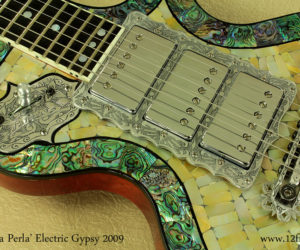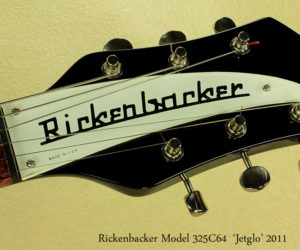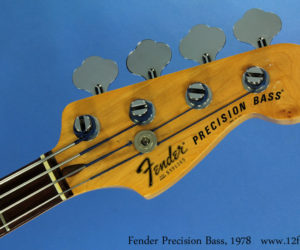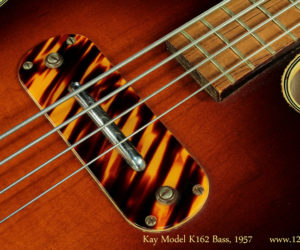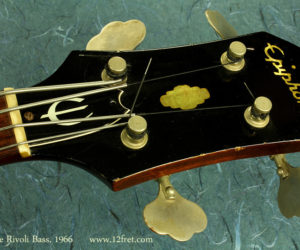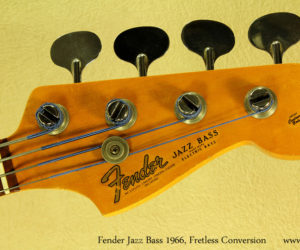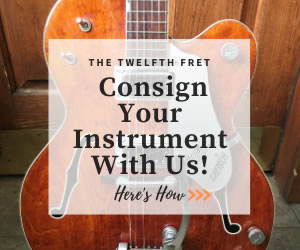Built in Austin, Texas, this 2009 Teye ‘La Perla’ Electric Gypsy is something to behold! Heavily decorated with inlay and engraving using a wide range of materials, the ‘La Perla’ is near the top of Teye’s line.
MORE →Posts Tagged bass
Based closely on the 1964 model, the Rickenbacker 325C64 brings forth memories from anyone exposed to the ‘British Invasion’ – or the Ed Sullivan show! – in the early and mid 1960’s. This 2011 example is in good condition and is really interesting to play – and of course it has that sound. Complete with Accent vibrato tailpiece.
MORE →Here’s an excellent condition Fender Precision Bass from 1978. The P-Bass is likely the most recorded instrument in history, and its portability and potential for volume is heavily responsible for how music is now presented. It’s been produced without break since 1951 and has remained a standard throughout.
MORE →Today we’re looking at a wonderful Kay Hollowbody Model K162 bass from 1957, in original condition. Kay introduced the Model K162 Bass in 1952 in response to Leo Fender’s 1951 Precision Bass, making it the second electric bass produced. The K162 was the first hollowbody bass produced, years before Gibson used the basses in their recently-purchased Epiphone line to enter the electric bass (EB) market.
This model became known as the “Howlin’ Wolf” bass because it was used by the Wolf’s bassist, Andrew “Blueblood” McMahon.
MORE →Here’s a lovely 1966 Epiphone Rivoli bass. The Rivoli was introduced in 1959 and was extremely similar to Gibson’s EB-2. They were discontinued in the early 1960’s, but production started again in 1964 because these basses were favoured by many of the bands arriving in the US as part of the British Invasion.
MORE →Here’s a lovely Fender Jazz Bass from 1966, converted to fretless in 1985 by Joe Kovacic at Lado Guitars. This instrument has definitely been used as was intended, with the honest wear that implies.As people discovered the potential of the fretless sound – Pastorius in Weather Report probably had a lot to do with that – fretless conversions became popular for a few extra reasons. The conversion is fairly quick to do, not exceptionally expensive, and is usually reversible. The frets are removed, veneer is glued into the slots, the board is planed level and the action set low. The Twelfth Fret’s repair shop has done many of these conversions, in both directions.
MORE →